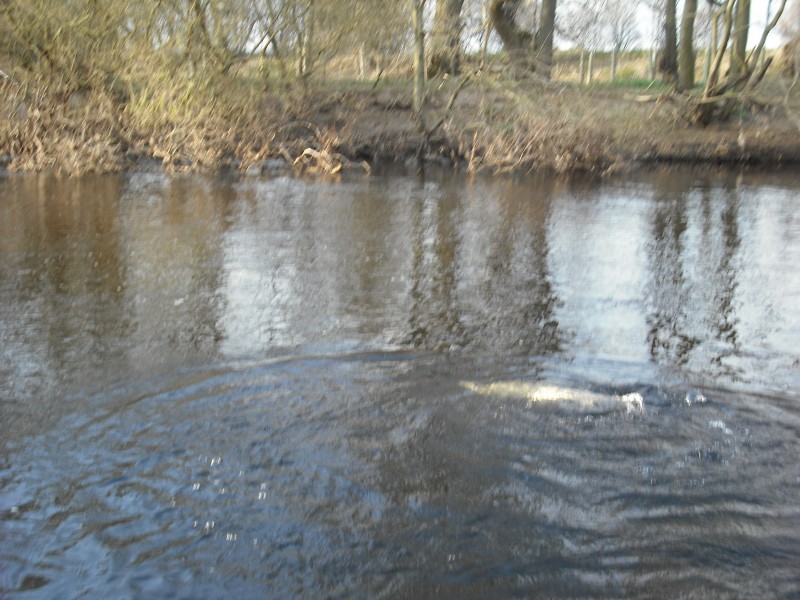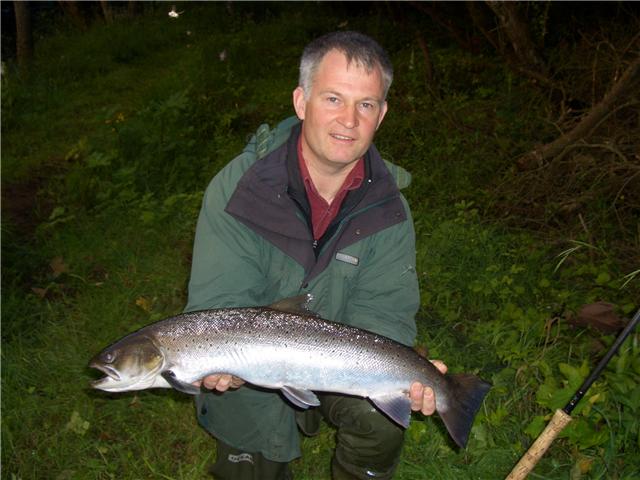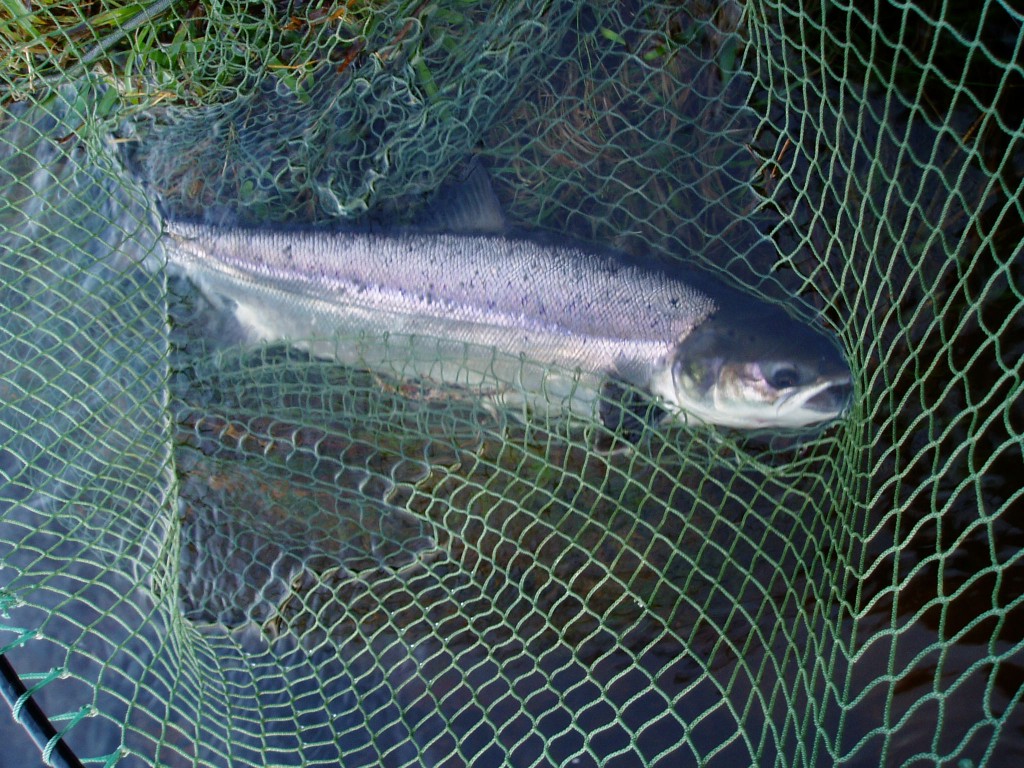The 2010 season turned out average for salmon and slightly better than that for sea trout. The main features of the season were:
- An encouraging spring run of two-sea–winter salmon was spoiled by the drought in May and June. In May the Usan nets at the mouth of the river allegedly killed nearly 800 salmon. If 65% of these fish were of South Esk origin it is reasonable to claim that the spring run is not as fragile as we thought. But how reliable are the catch returns? The photograph below shows a 15lbs salmon (returned) hooked in the Willows (Milton Beat) in April 2010.
- Sea trout abundance continues to improve. The 8lbs hen sea trout (below) caught by Derek Strachan in July in Haughs Pool on Bogardo Beat provides us with an indication of the quality of an individual survivor. This 9-year old fish had spawned 7 times and survived to return to the river in each of these years. Her spawning deposit in 2010, assuming she survived after being carefully released by Derek, should be about 5,000 eggs. These big egg-carriers are incredibly valuable for the future of our sea trout stock, and should always be returned to the river alive.
- The grilse appeared earlier than in recent seasons and provided increasingly good sport from mid July to the end of the season.
- The closure of the netting season on the 31st August was the trigger for a huge run of autumn grilse and two sea winter salmon, some very big fish among them. Even on the last day of October we were still catching some sea liced fresh fish, including an absolutely pristine cock grilse of 7lbs. From early September to the end of the season all Finavon’s pools held fish. I have not seen such an excellent show of fish at all stages of readiness to spawn for many years. There is good reason to think that the South Esk’s autumn runs of salmon and grilse are in excellent condition.
Since the season ended there have been some sharp frosts and plenty of rain. Some days have revealed good amounts of snow on the higher hills in the upper catchment, but at this time of year, when the sun retains the vestiges of autumn warmth, the snow comes and goes off the south facing slopes. Later in the winter we depend on hard-packed snow and ice building up in the corries to give a glacier-melt effect into the spring, on which the spring salmon depend for their upstream migration.
Some of our regular visitors have asked me to show how the 4 beats and best pools performed during the season.
Milton Beat
50 salmon & 30 sea trout. Best pool Willows (18S & 19ST) and Volcano (9S & 4ST)
Castle Beat
28 salmon & 10 sea trout. Best pool Beeches (13S & 1 ST) and Red Brae (8S & 3ST)
Indies Beat
25 salmon & 37 sea trout. Best pool Indies (14S & 21ST) , Frank’s Stream (5S & 11ST) and Melgund (6S & 5ST)
Bogardo Beat
28 salmon and 32 sea trout. Best pool Marcus House Pool (11S & 16ST) and Haughs (11S & 13ST)
With a total catch of 136 salmon & grilse and 121 sea trout we really cannot complain, although it is worth noting that elsewhere 2010 catches were dramatically improved over recent years. For example, the Thurso had an all-time record of over 3,000 salmon and grilse, and nearer to home the Dee and the Kyle of Sutherland rivers did well. As I write this blog in mid November our 2011 spring run of salmon will still be feeding at sea waiting for the biological trigger to send them back home.
Where are they now? They could be off the Greenland coast, or in that fertile area of ocean to the west of Iceland, or just nearing the redds before spawning. Wherever they are, I wish them well as they start their inward migration that will impel them inexorably, past a gauntlet-run of predators, obstructions and lethal threats to their survival, back into the rivers of their birth. The fish that make it all the way back to the very tributary where they lay as fertilised ova in the gravelly bed of the upland burn, will I hope lay their own deposit of eggs (about 1,000 for very kilogram of body weight). And then most of them, exhausted and fringed with fungus growth and scars from their epic migration, will die. Their bodies will be washed down the river, some to catch in the branches of overhanging trees; others to be swept by floods into riverside meadows to decompose; others to provide food during the hard winter months for the birds and the fauna of the riverbank. All that rich nutrition from the plankton of the deep ocean is carried by these salmon, and their final legacy is to fertilise our land to prepare for the miracle of the forthcoming spring. As they say, “what goes around, comes around”. That is the fate of the Atlantic salmon, most awesome creature!
Our spring salmon are mainly two-sea-winter fish averaging just under 10lbs. Local opinion has it that the South Esk springer is a slim-line fish, unlike some of the chunkier specimens you see in the North Esk. Looking at some photographs of salmon caught at Finavon between 1930 and 1965, I wonder whether local opinion is correct. I say this because during those years the river produced some very fine specimens; those fish were short and deep and in the high teens or early twenties of p0unds. I suspect that the shape of the fish as it returns to our river has more to do with the quality of feeding at sea than any other factor. Whatever their condition, the important thing is that these prime spring salmon continue to return to the South Esk, and we all can help that to happen by returning all salmon before the 31st May each season, until stocks improve to the point when that is no longer a necessity.
TA



